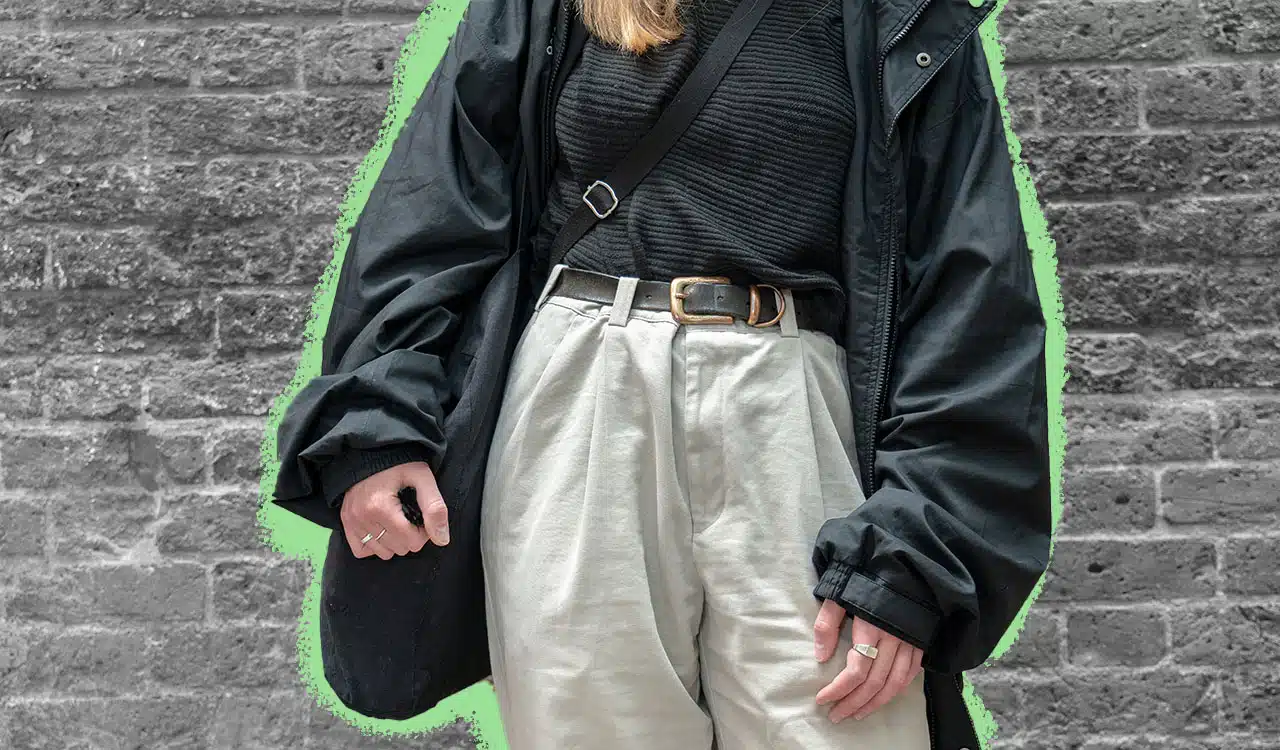Millennials knew what we were doing when we wore Crocs in front of our younger siblings. Up rose a generation of “millennials on steroids.” And now lo and behold, 69 percent of Gen Z women are “actively rebelling against patriarchy” with their fashion choices. While there is still a cohort of Gen Z’s who embrace hyper-femininity and traditional gender roles, the majority are giving uncomfortable, male attention-getting style like see-through polyester lace, soft porn lingerie and sky-high heels a robust “no thank you.” Think of this trend as the polar opposite of Lauren Sanchez’s personal style.
While the original man repeller concept focused on dressing to deflect the male gaze, the current resurgence is more about rejecting conventional fashion norms and prioritizing individuality. Gen Z is taking the concept of man repeller dressing to new heights.
To summarize and build on the popular definition of the “male gaze,” it refers to the way women are depicted in media an art, often froim a masculine, heterosexual perspective, objectifying them for the pleasure of a mlae audience To put it bluntly, the male gaze means looking at women and what women do from a chauvinistic male’s point of view.
Unisex clothing is taking over the fashion industry, with many women reporting they’re no longer wearing women’s clothes at all. Unisex is loose, utilitarian, and highly individualistic. Let’s take a look at the factors influencing the next wave of individualistic dressing, and the brands and products that will replace traditional “flattering” clothing.
The Resurrection of Man Repeller Dressing
“Man Repeller” style is nothing new. The concept has operated under the radar with women wearing pantsuits and other once expectation-subverting fashions since we first put needle to fabric. However, male gaze addressing was given the name Man Repeller by film critic Laura Mulvey in 1975, then resurrected by fashion and lifestyle blogger Leandra Medine Cohen in 2010, who later stepped down from her lifestyle blog in 2020.
While the original Man Repeller blog focused on dressing for the purpose of deflecting the male gaze, the current resurgence is more about rejecting conventional fashion norms and prioritizing individuality. Gen Z is taking the concept of man repeller dressing to new heights. Girls whose self-worth is contingent on male attention are called “Pick Me” and they’re the subject of 208.3 million derisive posts on TikTok. Lists of “clothing items men hate” were once relegated to the “Don’t” columns in fashion magazines. Nowadays, however, the internet is rife with opportunities for young women to rally around subversive dressing and collectively say, “We aren’t doing that anymore,” rejecting uncomfortable gendered norms.
Gen Z has long heralded individualism. As such, some of the boldest, most irreverent fashion influencers like Julia Fox and Saracampz are considered aspirational. It’s important to note, here that dressing for the male gaze doesn’t refer exclusively to gender conforming dressing. Man repeller dressing can also refer to those frilly, layered dresses that hide cleavage; neon bright, pattered clothing that deviates from “quiet luxury” neutrals; high waisted bottoms of any form; not “kissable” red lipstick… just about anything that turns traditional ideals of what’s flattering or “come hither” on their head. It means women dressing for themselves or, at the very least, one another, rather than a patriarchal archetype.
Pushback and Countertrends
Male gaze ambivalent dressing isn’t universal. It’s impossible to talk about women dressing for themselves without also talking about the conservative influencer push to inspire women to dress for men again. Alongside the resurgence of man repeller dressing, there’s been a large-scale attempt to reintegrate conservative values into fashion. Trends like the fading #cottagecore (8.7 billion views) and #quietluxury aesthetics are now being called “pipelines” to #tradwife (99.4 million posts on TikTok). And tradwife dressing is simply dressing like a married woman who embraces traditional gender roles, including dressing for the male gaze.
Influencers like asinderella have recently shared videos talking about the political undertones of the tradwife trend. It’s been decried as the current conservative government’s push to move women towards traditional gender roles. There’s a large conservative sect of next gens that embrace this type of fashion––mostly young men. In fact, there’s been a lot of recent research on the political and sartorial gender bifurcation among Gen Zs. Stay tuned, I’ll go into this further in my next article for The Robin Report.
Retailers need to understand that Gen Z women aren’t solely shirking gender norms and wearing neon prints or aiming for hyper femininity with softcore feminine dressing––their sartorial predilections are as bifurcated as our political climate. However, it is critical that retailers keep both their customer base and brand ethos in mind when sourcing fashions for next gen women.
Agency and Choice
Think about what young women would wear if there were no one around to appraise them: High waisted bottoms and oversize sunglasses à la Paris Hilton in the early aughts; dystopian taped-on fashion, mesh baklavas, and pointy toed shoes à la Wicked Witch of the West in 2025. Maximalist Miu Miu and Prada’s current aesthetic of massive silhouettes, messy hair, and bug-eye sunglasses are perfect examples of anti-male gaze dressing. Dickies gender neutral interpretation of hip-hop and skate wear are also in high demand.
Not dressing for the male gaze is as complex as the male gaze itself. Wearing intentionally unflattering fashion is both a flex again and the answer to “why would she wear that.” Because she wants to. Young women are challenging themselves to boldly wear exactly what they like without worrying about if it would be considered attractive to a real or hypothetical male.
Gen Z women dressing outside the male gaze isn’t just about clomping shoes and ironic sunglasses—it’s about choice. Whether that looks like wearing a bodycon dress with platform Crocs or a suit three sizes too big, autonomy is the unifying thread. The most powerful fashion statement Gen Z women are making right now is, “I’m not dressing for you.” The brands that survive this evolution will be the ones that recognize that the majority of Gen Z women aren’t looking for a one-size-fits-all aesthetic. They’re looking for options that reflect who they are and who they want to be—not who they’re supposed to attract.





